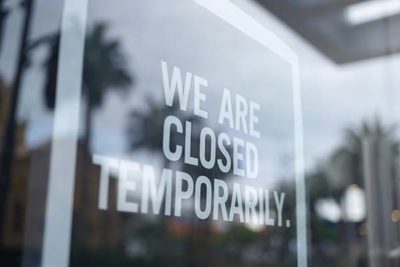- By:
- Category:

Sacramento, March 18, 2021 — A new analysis by the nonpartisan California Policy Lab finds that nearly one in five California workers received unemployment insurance (UI) benefits in February 2021, nearly a year after the COVID-19 unemployment crisis began. About half of all UI recipients in California have now claimed more than half of a year’s worth of benefits, raising concerns about the well-documented financial, career, and poverty consequences associated with periods of long-term unemployment.
“We’re approaching the one-year anniversary of this crisis, and about half the Californians who are receiving unemployment right now have been receiving UI benefits for more than six months, which is concerning given what we know about the so-called “scarring” effects of long-term unemployment,” explains Till von Wachter, a co-author of the analysis, UCLA economics professor, and faculty director at the California Policy Lab. “We’ve seen in previous recessions that long-term unemployment is linked to increased risk of lasting income reductions, poverty and challenges with ever returning to work. The American Rescue Package, the Golden State Stimulus, and increased vaccinations (and loosened restrictions on businesses) will undoubtedly help, but policymakers will want to keep a close eye on the durations of these periods of unemployment for California workers. UI extensions are a crucial tool to alleviate suffering during such a period of unavoidable long-term unemployment spells.”
The report includes a new, in-depth analysis focused on the 3.7 million Californians who have claimed UI benefits for more than six months, and are therefore considered long-term unemployed, including breakdowns by unemployment program (PUA vs regular), demographics of the workers, and industries they worked in previously.
Key research findings
• As of mid-February, close to 1 in 5 workers in the state (about half of the workers who have claimed UI during the crisis) have claimed over 26 weeks of UI benefits. Long-term unemployment (LTU), defined as claiming UI benefits for more than 26 weeks, is known to cause long-lasting “scarring” effects to workers and the economy. The incidence of LTU is particularly high among Black workers, older workers, women, less-educated workers, and PUA claimants.
• Total Initial Claims declined in February, but were still 50% larger than the peak seen in the Great Recession. Average initial claims were 173,000 in February, which is 40,000 fewer than in January. “Additional Claims” (the re-opening of a claim after a claimant has returned to work) continue to make up the majority (75%) of initial claims.
• Female workers, less-educated workers, and millennials have disproportionately benefited from the December extensions of the PUA and PEUC programs. Over half of all workers receiving benefits under the PEUC and FED-ED extension programs reported having no more than a high school degree, despite making up just 33% of the labor force.
• Since the start of the crisis, over 45% of workers who were in the labor force in February 2020 have claimed UI benefits. Since mid-March 2020, 9.2 million unique California claimants have filed for some type of UI benefits. The fraction of the pre-pandemic labor force having claimed UI benefits is close to 90% among Black workers, 73% among Asian workers with no more than a high-school degree, close to 70% among Generation Z workers, and 50% among female workers.
• Over 10% of UI claimants exited the UI system in December 2020. This spike in exits was likely driven by two factors: EDD began freezing claims suspected of fraud at the end of 2020, and workers who exhausted PEUC and PUA benefits prior to December 26th were (until recently) unable to certify for benefits corresponding to weeks of unemployment experienced during 2021.
• The Food Services sector was hit hard during the December surge of COVID-19 cases. The share of initial claims from the industry have trended downwards in 2021 as case counts improve. This has coincided with a decrease in the share of regular UI claims being filed by Millennials and Gen Z workers – both of whom are more likely to work in customer-facing service industries.
###
The California Policy Lab creates data-driven insights for the public good. Our mission is to partner with California’s state and local governments to generate scientific evidence that solves California’s most urgent problems, including homelessness, poverty, crime, and education inequality. We facilitate close working partnerships between policymakers and researchers at the University of California to help evaluate and improve public programs through empirical research and technical assistance.
The Labor Market Information Division (LMID) is the official source for California Labor Market Information. The LMID promotes California’s economic health by providing information to help people understand California’s economy and make informed labor market choices. We collect, analyze, and publish statistical data and reports on California’s labor force, industries, occupations, employment projections, wages and other important labor market and economic data.
